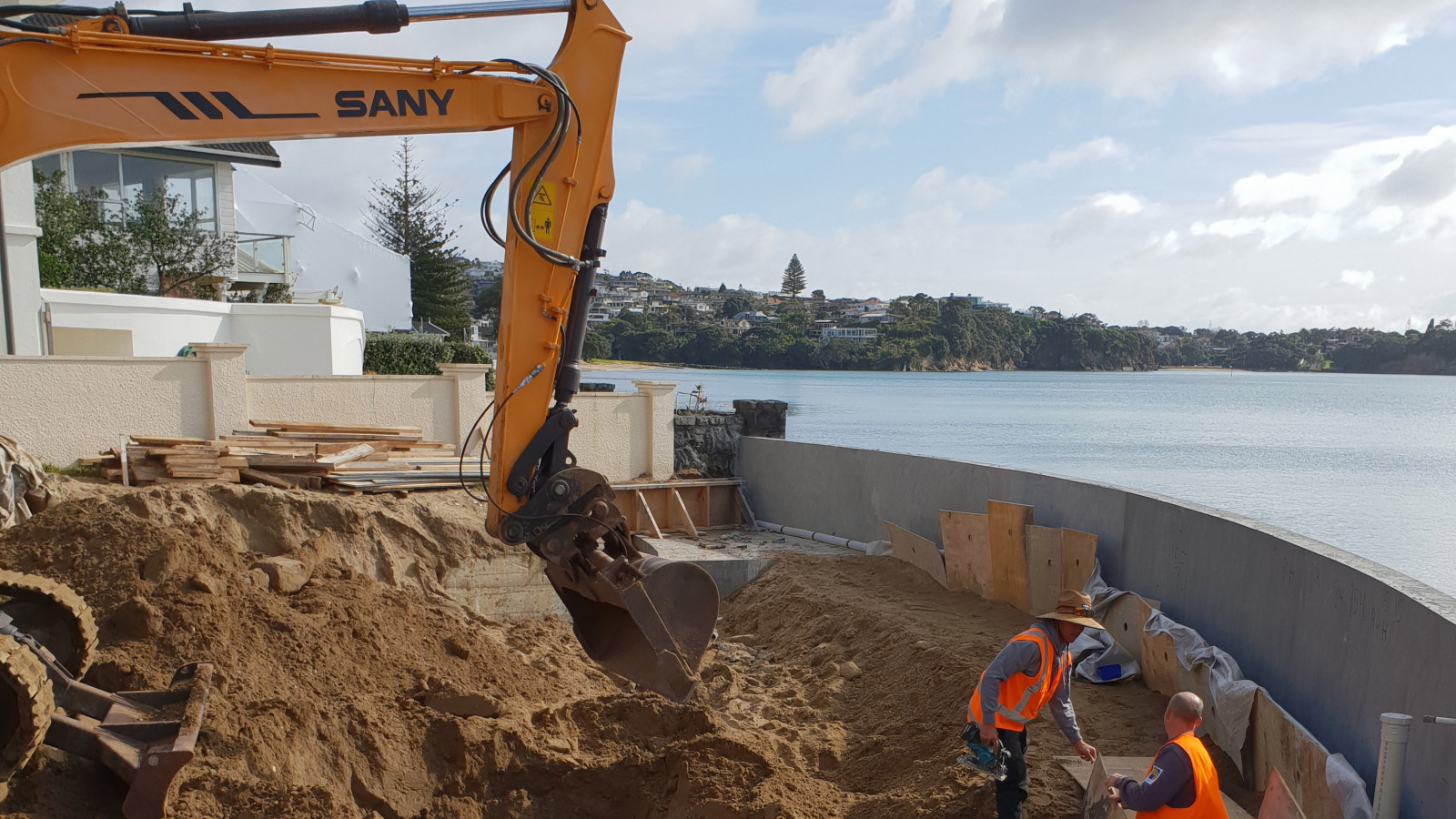Allco offers a wide range of below-grade waterproofing technologies and materials, including swellable bentonite-based membranes, bitumen torch-on and self-adhesive membranes, and even a bentonite-polymer alloy (BPA). These materials have varying chemical resistance properties, and so special testing is required to ensure that the site water is compatible with the waterproofing membrane. This is especially important in 'brownfield' or 'saline' sites where existing soil and/or groundwater contaminants are present. Here I provide a detailed discussion of the water/soil compatibility test and its importance in the design of any below-grade waterproofing system.
Water Sampling
The water analysis starts with the project specification. In a proper specification, the contractor or applicator will be required to furnish a representative site water sample to the waterproofing manufacturer (Allco). Ideally, the sample can be obtained very early in the project, such as during the hydrogeological investigation. More typically, however, the water sample is submitted during construction from a site de-watering system or sump. It is important that the water collected is representative of actual groundwater conditions at the site. This means it should not be mixed with surface water runoff or precipitation. If the site covers a large area and there is the potential for water quality variability, then individual samples will be tested.
Water samples should be placed in 1L plastic bottles, supplied by Watercare. Samples are then taken immediately to Watercare for testing. Results are usually provided within 10 days.
The Compatibility Test Procedure
When a water sample is received at Watercare laboratory, three screening tests are performed to assess compatibility. These tests measure water quality from instantaneous instrument readouts.
- pH: Indicates if any strong acids or bases are present; these chemicals can damage bentonite clay. It would be unusual to measure pH that is not close to neutrality (7.0).
- Conductivity: Indicates strength of dissolved salts in the water. Because salts can hamper the swelling and sealing properties of bentonite, this is a very useful indicator parameter and is used to determine whether standard or contaminant-resistant products are evaluated.
- Total Dissolved Solids: Is used as an indicator test to determine the general quality of water. If these levels are too high for standard Voltex or Voltex SWR then an APC (Active Polymer Core) membrane such as Coreflex 60 or Coreflex XP would then be considered.
CETCO uses these test results to develop project-specific guidance as to which Volclay Waterproofing products will perform effectively when in long-term contact with the site water.
Test Results
The pH and conductivity test results serve as indicators of key water quality parameters but do not measure waterproofing performance. If the pH is outside the 5-8 range or if the conductivity exceeds 2,500 us/cm-1, saltwater resistant (Voltex SWR) membrane will be considered suitable for the site.
It should also be noted that in exceptionally contaminated (saline) waters, it is possible that the Voltex SWR would not perform sufficiently. When contaminated or high levels of saline are found on site, CETCO will not hesitate to make a recommendation that either eliminates Volclay waterproofing as a potential solution or suggests the Coreflex system instead. Commercial considerations will not influence the objective recommendations made in these tests.
Conclusion
While some may view the water test as an inconvenience, it provides vital information on the suitability of Volclay Waterproofing products on a site-specific basis. For this reason, it is a required test for all projects proposed to be covered by CETCO's comprehensive system warranty where risk from contamination or saline might be present.




























 Most Popular
Most Popular Popular Products
Popular Products


